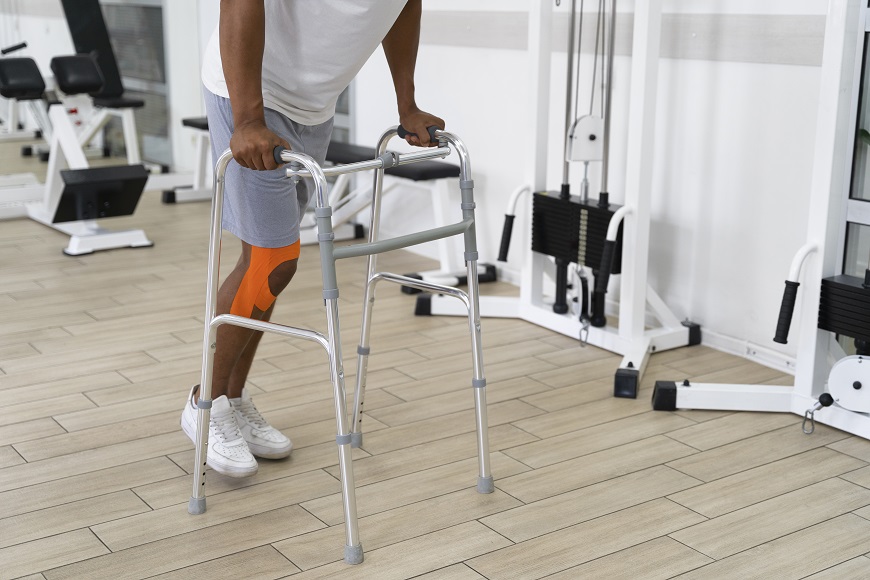
Tips for getting used to orthopedic aids
Tips for getting used to orthopedic aids, Belgrade, TOP PRICE✓ Orthopedic aids for better recovery and mobility✓ Prostheses, orthoses, crutches, wheelchairs✓
Tips for getting used to orthopedic aids
Damage and irregularities in the locomotor system require the use of technical devices, whose basic function is to restore stability and mobility to the body. Getting used to orthopedic aids requires effort and patience, and the easiest way to overcome all difficulties and the phase of getting used to them is to familiarize yourself in detail with the purpose of these aids and to have an expert next to you who can help you and facilitate the process of using the device.
What does getting used to medical devices mean?
Any type of problem requires a visit to the doctor, in order to receive an adequate diagnosis and instructions for further treatment. Procedures and treatments you receive in hospitals are a key factor in your recovery, but their effectiveness is most often conditioned by home care, which has a decisive effect on improving your condition.
Home care means recovery in your home, with special conditions and new habits that you should include in your daily routine, so that the entire recovery process is productive and efficient.
Depending on the type of problem you have, home care can take a shorter or longer period of time. It is important to arm yourself with patience, because it is very likely that during recovery you will find it difficult to move, and that you will need the help of other people to perform some basic functions.
During recovery, every movement is important, starting with the position of the patient in bed, and ending with how much the person moves and at what pace. This can be very frustrating, especially if you haven't been in a similar situation before. However, understand the recovery phase as crucial for returning to normal everyday life with a healthy, or at least recovered, body.
Orthopedic aids - types and purpose
According to their purpose, orthopedic aids are divided into prostheses, orthoses, orthopedic shoes, bandage aids and other orthopedic aids such as crutches, canes, insoles and various types of walkers.
Prostheses are a substitute for a specific part of the body that is missing, usually a limb or part of an extremity. Their purpose is to compensate the deficiency functionally and aesthetically, so that a person can move and use a certain part of the body regardless of the injury or problem he had.
Orthosis belongs to orthopedic aids that serve to relieve, support, stabilize, fix or correct a certain part of the body. Depending on the patient's diagnosis, he may be prescribed a corrective or stabilizing orthosis. Corrective orthosis is intended for treating and correcting deformities, as well as stopping their further progress. Stabilizing orthoses serve to support a certain part of the body.
Orthopedic footwear is medical footwear, specially designed for the patient, according to his footprint. It is used to alleviate or completely eliminate the deformity of the foot, due to which the patient cannot wear classic ready-to-wear shoes. The wearing of such footwear is prescribed exclusively by a specialist in physical medicine and an orthopedist, or a vascular surgeon.
Bandage aids refer to the wrapping of body parts, the application of plasters and bandages in order to achieve short-term results in the recovery of the affected part of the body. Other orthopedic aids include orthopedic insoles, canes, crutches, wheelchairs and walkers.
Medical help at home is always welcome
A large number of patients decide for medical help at home on their own or on the recommendation of a doctor. Home care is needed by people suffering from chronic diseases, those recovering from hospital treatment, but mostly by patients who have to use orthopedic aids and move around with them on a daily basis.
The presence of a professional is extremely important if you live alone, or if your family members are not able to devote themselves to you sufficiently. The services that the patient receives in this way include monitoring the overall condition, dressing wounds, post-operative rehabilitation, taking care of regular medication, assistance in handling mobility aids, preventive work with the patient and his family and many other services.
The biggest benefit that patients receive in this way is psychophysical safety and reliability in terms of proper and adequate use of drugs, devices and accompanying activities necessary for recovery.
When it comes to getting used to orthopedic aids, Belgrade, as well as most other places throughout Serbia, offer physical therapy and care at home. In order to go through the phase of recovery and getting used to the new conditions as easily as possible, get informed and ask for the services of institutions that provide home care. You will be in good hands, and most importantly, you can be sure that your recovery is going as smoothly as possible.
How to Contact Us?
For more information about our services or if you have any questions, feel free to visit our CONTACT page and get in touch with us. We’re here to help!